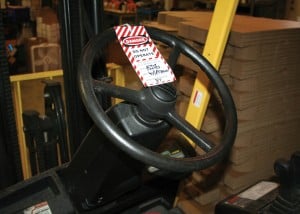
We all have different styles when it comes to making decisions. When it comes to making a choice at work, how do you like to operate?
Do you:
A. Prefer to receive lots...
![]() The best safety professionals that I've worked with like safety. They read all the right safety magazines and go to all the right safety conferences. But that's not what gets them out of bed in the morning. What they're really passionate about, and what makes them stand out, is their desire to keep as many people safe as possible.
The best safety professionals that I've worked with like safety. They read all the right safety magazines and go to all the right safety conferences. But that's not what gets them out of bed in the morning. What they're really passionate about, and what makes them stand out, is their desire to keep as many people safe as possible.
What makes them so remarkable (and such a joy to work with) is that they're humans at work. Not machines.
According to Seth Godin, in the book Linchpin, what makes people irreplaceable in their job is their passion for their work. Work is personal. And when this happens your customers and coworkers are more connected and happy.
Ordinary safety professionals are like cogs in a machine. Easily replaceable and only doing the work that they believe they are employed to do. Safety manuals. Check. Risk assessments. Check. Safety training. Check.
When I work with them, safety is all about compliance (the work is all about ticking the right boxes) and making sure the company is seen to be doing the right things. But deep down they don't really care that much about their fellow workers. There is no attention to detail. Their mind is elsewhere. They get bored pretty quickly when I discuss how we can improve filming their safety process, so people can easily understand it.
A truly great safety professional doesn't blindly follow instructions, they challenge the status quo and look at ways to better communicate their message. They're not happy with mediocre. They live for their job and are always thinking of innovative solutions to their safety problems. They don't just accept the standard answers. Every time they can, they think about how they can ensure workers make it home to their families.
And this is called art.
Let's get things straight. Art doesn't mean you can draw or paint, it means you can see. You can see what's right or wrong.
As Seth Godin, makes clear art is anything that's creative, passionate and personal. And great art resonates with the viewer, not only the creator.
Artists can work with watercolour and clay. But artists can also work with business strategies, customer service, managing a meeting and safety. Art is about intent and communication, not substance.
Artists takes their job personally. They are willing to challenge the status quo, be bold, insightful and creative.
A safety artist is not willing to put up with ordinary safety results. He's ready to do what it takes to inspire a workforce to work safely. He might have to be compliant, for compliance sake, but he's also prepared to do more than just be compliant.
As Donald J. Eckenfelder says in Values-Driven Safety, when discussing the work he did at Chesebrough-Ponds to improve safety- "We had saved millions of dollars, but we were driven by a concern for our employees. I'm convinced that when we stopped being obsessed wth the law and and even the costs, and focused on doing the right thing for employees, we turned the corner".
As Seth Godin states, "Art is a personal gift that changes the recipient. The medium doesn't matter. The intent does".
So to all the safety artists out there - what are you going to spend your day doing? Doing the bare minimum because you don't feel like anyone notices or deciding that it's up to you to make a difference to peoples' lives and their families. Today, you're going to go that extra mile because you care about what it takes to get people to act safely. Not because you're paid to, but because you want to.
And if that sound like you - let me know. You're just the type of person I love to collaborate with (and believe me, I'll know pretty quickly).

We all have different styles when it comes to making decisions. When it comes to making a choice at work, how do you like to operate?
Do you:
A. Prefer to receive lots...

When it comes to warnings about potential dangers or giving people an important instruction on site, you have to rely on labels and signs to communicate. A sign's...